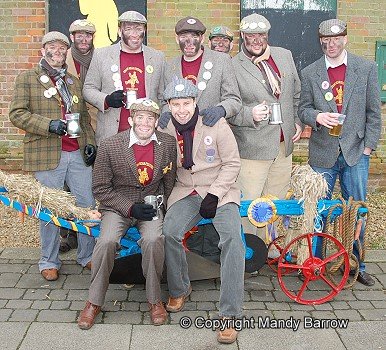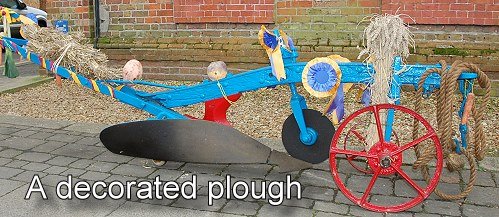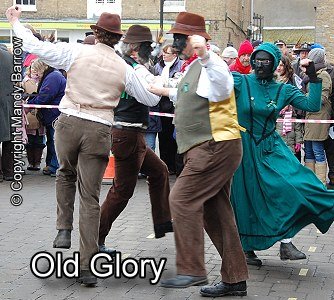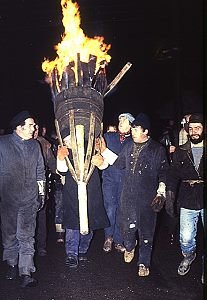Special Days Every Month
Celebrate and learn about special days
every day of the year!
|
Plough Monday
|
||
|
Plough Monday is the first Monday after Twelfth Night. It was an important and fun day for farm workers.
As agricultural work was scarce in the winter, farm labourers disguised themselves, by blacking their faces with soot, to get money by dragging a decorated plough around the larger houses in the villages. As they dragged the plough they would shout out "Penny for the plough boys!".
Blessing of the Ploughs In medieval times it was common for ploughs to be blessed by the church on Plough Sunday. Farmers resumed their work on Plough Monday after the 12 days of Christmas. Plough Monday Plays Plough Monday plays were popular in parts of Lincolnshire, Nottinghamshire and the East Midlands. They were similar to that of Christmas Mummers Plays in that they were performed by young men and included some of the same story elements, such as the death and resurrection of one of the characters. Molly Dancers Molly dancing is most commonly performed on or around Plough Monday. In the past, Molly dancers sometimes accompanied the farm labourers to dance and entertain for money. They blackened their faces with soot to disguise themselves so they could not be recognised by their future employers.
Links
Also on this day ……..
11 January 1994: The Duchess of Kent announced that she was converting to Catholicism, the first member of the Royal Family to become a Roman Catholic since James II in the 17th century.
|
See Teaching Resources for today’s date
Back to Facts of the Day Calendar
Jan | Feb | Mar | Apr | May | Jun | Jul | Aug | Sept | Oct | Nov | Dec
 © Copyright – please read © Copyright – please read All the materials on these pages are free for homework and classroom use only. You may not redistribute, sell or place the content of this page on any other website or blog without written permission from the . projectbritain.com | primaryhomeworkhelp.co.uk |
© Copyright 2013
is the creator of the Woodlands Resources section of the Woodlands Junior website.
The two websites projectbritain.com and primaryhomeworkhelp.co.uk
are the new homes for the Woodlands Resources.
left Woodlands in 2003 to work in Kent schools as an ICT Consulatant.
She now teaches computers at The Granville School and St. John’s Primary School in Sevenoaks Kent.
Woodlands Junior Homework Help new website
born on this day what happened on this day famous birthdays interesting facts did you know Interesting Calendar Facts.









